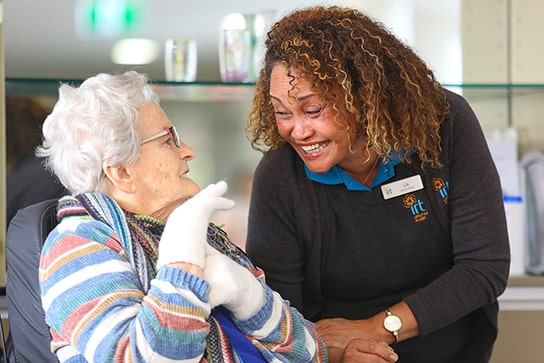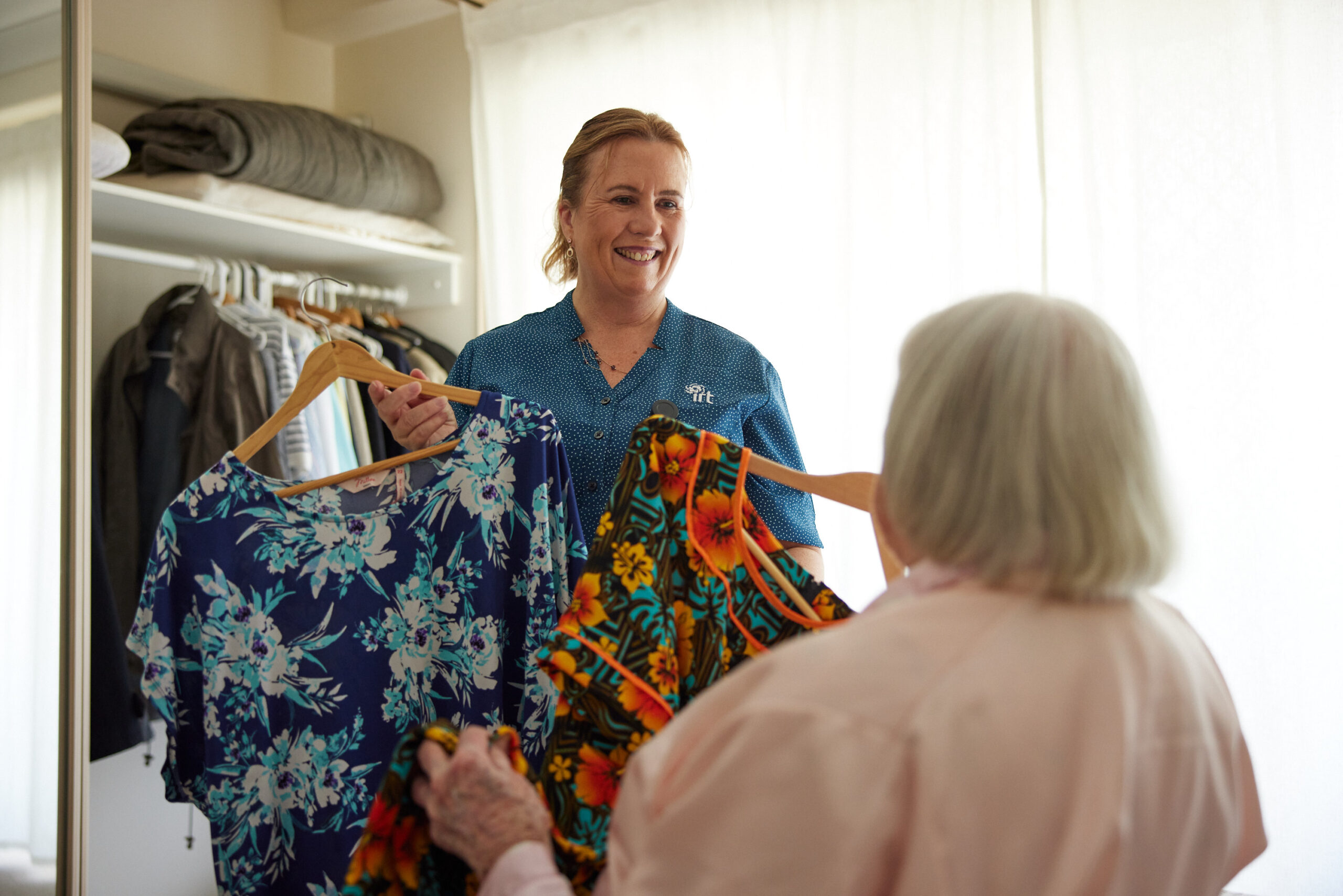Palliative care vs end of life care: what’s the difference?
What is palliative care? People think palliative care is the end of someone’s life, but there’s so much more to it.
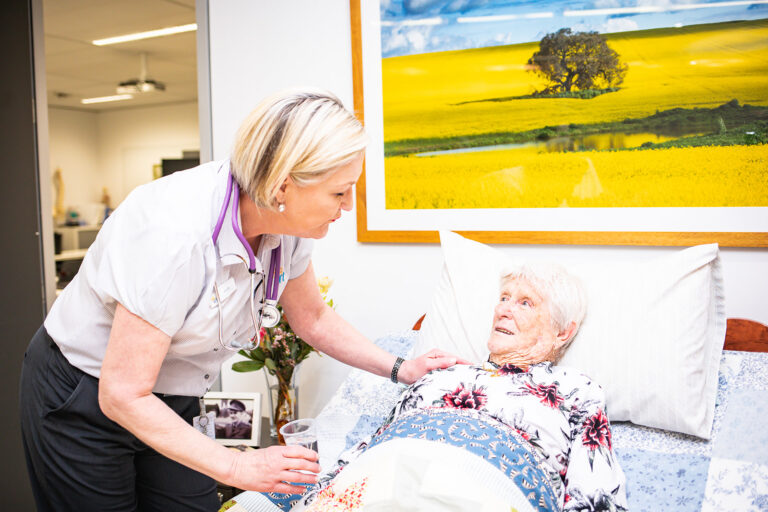
Many people wonder if palliative care and end-of-life care are the same, however, while they can overlap in some ways, the two are distinctly different and serve different purposes.
In this article we explore these two forms of compassionate care that aim to improve the quality of life of people facing life limiting illnesses. We’ll also look at how this care can help support those who need it along with their family and carers.
Are palliative care and end of life care the same?
In a nutshell, no. Palliative care aims to improve the quality of life of anyone with a life-limiting illness or chronic condition. You can receive palliative care at any stage of your illness, and receiving palliative care does not always mean that you’re coming to the end of your life.
A person receiving end of life care (as the name suggests) however, has a terminal illness, is close to death and has stopped receiving curative treatments.
However, there’s a bit more to it than that. Read on to learn more about each of these forms of care and how they differ.
Palliative care
What is palliative care?
Palliative care is a type of comfort care that offers practical and emotional support for a person with a life-threatening or life-limiting illness, such as cancer, chronic kidney disease or dementia. Palliative care is a holistic approach to care and aims to treat the cause of symptoms, manage medications, help with communication or decision-making about treatment options, and provide family support.
What’s the purpose of palliative care?
While having a life-limiting illness can take away some of the controls and freedoms a person is used to, an individual will always have a choice over how they would like to receive care and comfort to manage their quality of life.
Palliative care is designed to maximise someone’s quality of life with a life-limiting illness or chronic condition through care, various treatments, and various types of support, from physical symptom management and mental health care in consultation with healthcare professionals to social connection and spiritual support.
Who benefits from palliative care?
Palliative care is for people with a life-limiting illness or chronic condition, regardless of where they are at in their life expectancy. Care is designed to be holistic and improve the quality of life for the person and also offer support to their family and friends.
The approach and treatment is guided by the specific person and their family’s needs as opposed to their prognosis, and many people receive palliative care alongside curative treatment. Palliative care services are also offered to family and friends, especially in the form of emotional support such as counselling to help manage stress and difficult emotions such as grief and anger. Sometimes palliative care also includes practical support for things such as managing finances or making a will.
At what stage does palliative care start?
Ideally, palliative care should be offered to anyone suffering from a life-limiting or life threatening illness, regardless of their prognosis or stage of serious illness. Because palliative care is designed to enhance quality of life through various treatments and support services, it’s an invaluable service that can help a person and their loved ones navigate a very challenging situation and receive additional support, whether it’s pain management for physical symptoms or relaxation strategies such as music therapy and massage.
People often assume palliative care is only for people with pain and other symptoms who are at the very last stage of life, but that’s typically end of life care. In fact, someone receiving palliative care may recover from their life-threatening illness.
Palliative care should also be offered to a person or their family and friends when they’re feeling the emotional weight of a life-limiting illness. Palliative care is not simply pain management, it’s much more holistic than that. Specialist palliative care services and treatments do include pain management and alleviating physical suffering, but a big part of palliative care is also offering emotional, spiritual, social and even practical support through various care services.
What is the difference between palliative care and hospice?
You can receive palliative care services in a range of settings including your home, a hospital, residential aged care, or a hospice.
A hospice is a specialised palliative care facility that provides physical and emotional support to a person with a life-limiting illness. Your care team can put you in touch with a local palliative care service that offers hospice services including standalone hospice facilities or rooms within a hospital.
Hospice facilities can provide short-term respite care as well as longer-term care. You may decide to enter a hospice for palliative care services to help provide relief for your friends and family who are caring for you, or you may choose to split your time between your home and a hospice.
You will find that a hospice differs from a hospital as it is a much more quiet, calm and peaceful environment. A hospice allows you to focus on spending time with family and friends while health professionals provide around-the-clock care, including control of symptoms and pain relief.
What are the stages of palliative care?
Palliative care can start at any phase of a life-limiting illness, but ideally palliative care starts as soon as a person receives their prognosis.
Palliative care is commonly split into stages, and each stage offers a range of medical, emotional and psychological support services as a person progresses through the various stages of their illness.
Stage 1 – Stable
The first stage of palliative care focuses on developing a plan with your medical team that identifies your current health problems and outlines the treatments to manage your symptoms and enhance your quality of life.
The plan will also outline the expected evolution of your illness, how your current care services will also evolve, any care preferences you may have including the types of therapy you would like to receive, and future medical treatment decisions.
Stage 2 – Unstable
When a person’s illness progresses and your condition worsens, your specialist palliative care team will revisit your plan and adjust your treatments to manage your symptoms and ensure you remain comfortable.
In this stage you and your family will also be offered a range of emotional and mental support, including counselling services, recreational and leisure activities, and religious or spiritual meetings and gatherings.
Stage 3 – Deteriorating
If a person’s overall health begins to decline, your symptoms start to worsen and more severe or complex medical issues develop, your palliative care will start to shift towards end of life care. Your medical team will make continual adjustments to your care plan to provide suitable ongoing treatment for your condition as well as appropriate symptom relief.
At this stage, extra emotional and mental health support is also arranged for both you and your loved ones to help manage the distress that comes with such an unprecedented time. You may also choose to enter hospice care or increase your home support to ensure you remain comfortable and to provide additional help for your family and friends.
Stage 4 – Terminal
A person who has reached the terminal stage of their illness may experience a number of symptoms that can indicate the end of their life is imminent, including becoming bedridden, a decrease or loss of appetite, difficulty swallowing medications and solids, severe loss of mobility, or a severe diagnosis that requires daily medical interventions.
This stage of palliative care focuses on improving quality of life, including physical comfort such as extensive medical care and additional end-of-life medications, as well as psychological, emotional and spiritual services for you and your loved ones.
Care can still be provided at home or in a hospice, however it is also possible to move to a hospital is extra medical care is required.
Stage 5 – Bereavement
Sadly, the final stage of palliative care focuses on supporting a person’s loved ones when they have passed away.
Your palliative care plan shifts towards providing care for your loved ones through a range of bereavement services that focus on mental health, and spiritual and emotional support. These services could include support groups, meetings with faith leaders, and appointments with counsellors or psychologists.
The length of the bereavement stage of your palliative care plan depends on how much support each individual needs, and can last from a few weeks to months or as long as it is formally required.
End of life care
What is end of life care?
End of life care is offered to a person at the last stages of life and aims to make them as comfortable as they possibly can be.
Who receives end of life care?
According to the Australian Institute of Health and Welfare, end of life care typically refers to the 12 months prior to a person’s death, in contrast to palliative care which is specifically tailored to assist with the effects of life-limiting illnesses.
End of life care is a specific type of care available for people who have been given 12 months or less to live and who have stopped curative treatment.
What’s the purpose of end of life care?
Like palliative care, end of life care also aims to improve quality of life, however it’s a service that’s available for people with terminal illness during their final stage of life. During this period, which is usually weeks or months, the body starts to shut down and the person may lose mobility or the ability to consume food, beverages or medications. End of life care aims to make the person with a terminal illness as comfortable as possible without compromising their level of consciousness too much.
How is end of life care different to palliative care?
Palliative care is designed to make it easier for you to live your life to the fullest while dealing with a serious illness, whereas end of life care is more about managing the effects of rapid deterioration as someone approaches death. It may be difficult to eat and drink and a person’s decline might be characterised by weight loss, immobility and loss of consciousness.
What is provided as part of end of life care?
End of life treatment may involve pain medication such as morphine, repositioning someone to relieve pressure or intravenous medication or a drip to help with hydration. It might involve music therapy but lifestyle activities are less common. Practical support may include helping the person and their family with making funeral arrangements or having a professional attend for spiritual support at the last days or moments of life.
When should someone be offered end of life care?
Someone should be offered end of life care when they’ve been given six months or less to live and they have stopped curative treatments. End of life care offers critical support to people who are in the process of dying and ensures they are able to live as comfortably as possible for their remaining time left. This type of care also benefits loved ones by offering emotional and practical support to manage the incredible toll a time like this can take on those who are caring for a person at the end of their life.
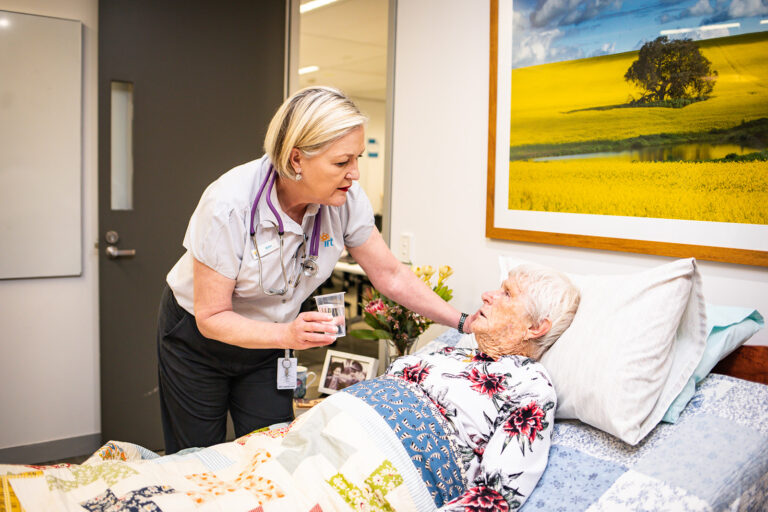
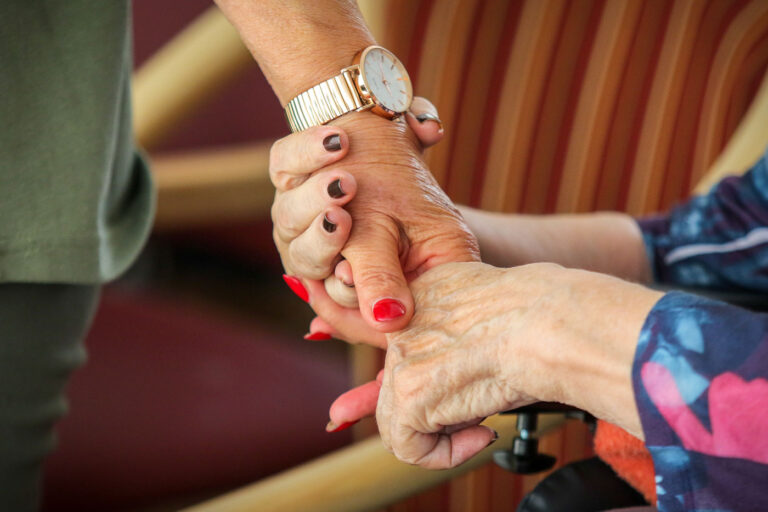
Palliative care at IRT
At IRT, many of our aged care centres offer specialised palliative care and end-of-life care in a supportive and calm environment where our palliative care team puts the individual first. Participating care centres offer 'Serenity' neighbourhoods: defined areas which offer specialised palliative care to help residents manage symptoms and access the personalised care and support they need to manage a life-limiting illness. We also have a Namaste program at participating care centres that focuses on treatments such as therapeutic touch, aromatherapy, and music therapy.
Find out moreSubscribe to our newsletter
You may also like
Choosing an Aged Care Centre: What to consider
Moving from your home into a residential aged care centre can be a rewarding experience for you or your loved one.
Creating an aged care resume with no experience
In this guide we will explain what an aged care resumé is, share tips on how to write a strong one and provide an aged…

